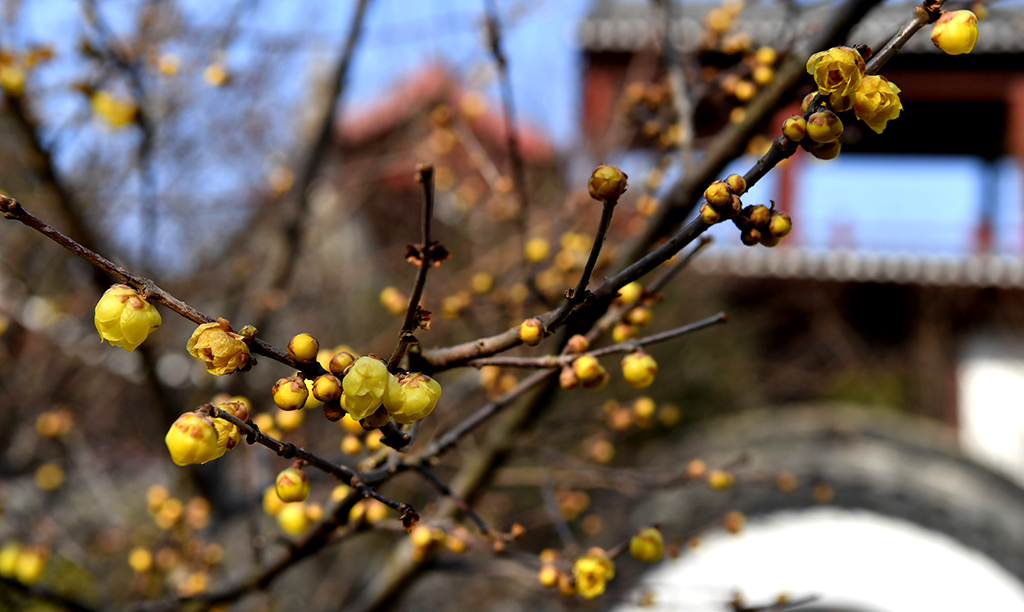Violin 'variations' in the village
It's about how smart you could tune the instruments to keep up with the change
Editor's note: Every three violins in the world come from Donggaocun town, in Beijing's suburban Pinggu district. Their violins have been exported to more than 30 countries and regions, accounting for nearly 30 percent of the world's total violin production. The current international market conditions and the COVID-19 pandemic have gradually changed the industry in the village. This violin production hub is facing unprecedented challenges. With the resumption of production of small and medium-sized enterprises in China, the "violin village" has embarked on a new journey.
Located in the Pinggu district of Beijing, Donggaocun town has a 30-year history of violin manufacturing. In 2009, the town's violin production reached 200,000, and they are sold to more than 30 countries and regions on four continents including Europe, Asia, America and Oceania, accounting for nearly 30 percent of the world's total violin production. The product line has expanded from the single violin production to a series of musical instruments such as erhu, bass and guitar. In 2009, Donggaocun town was recognized as "China's Violin Industry Base" by China National Light Industry Council and China Musical Instrument Association.
In Donggaocun, Beijing Pinggu East China Musical Instruments, established in 1988, is the largest violin manufacturer in North China. Its production includes violin, viola, cello, bass and erhu. Liu Yundong, the representative in charge, says: "In the past, every three violins in the world came from Donggaocun village. Each violin was worth only 100 to 200 yuan ($28.6), and 80 percent of them are low-end products. We have shifted our production focus on developing fine musical instruments. Now a Pinggu violin can be sold for up to 70,000 or 80,000 yuan, and the improvement in quality is naturally favored by high-end customers."
Liu Zunfei, a graduate of the violin production department of the Central Conservatory of Music, is a post-'90s generation luthier born in East China. When he was 13 years old, he came across a set of violin making tools hanging on the wall in a row in a senior luthier's mansion. The fine instruments left him in awe, and since then, he has become attached to violin making. After graduating from the music college with a master's degree, he took the career path of professional violin making. In the fourth China International Violin and Bow Making Competition held in 2019, Liu and his colleagues made violins independently for seven months, and they stood out from 437 entries from more than 200 contestants around the world. Two violins with excellent craftsmanship among their four entries entered the top 50.
He believes that the production of violin is comparable to artistic creation, in which the most important thing is quality rather than quantity. The production of violins takes many processes, such as panel jointing, scraping, engraving, fitting, painting, etc, and it often takes more than two months to produce a good violin. Liu and his colleagues have also independently developed the use of natural plants and Chinese herbal medicines, such as shellac, gardenia, lavender oil, and have them refined into alcohol-free and oily pigments that avoid the hazardous benzene chemicals. They replace the original violin outer chemical paint with the pure plant pigments that are harmless to both the environment and workers.
Due to the COVID-19 pandemic, sales of violins have stalled. On the premise of ensuring product quality, these violins factories aim at the "cakes" in the domestic market. "Now there are more and more violin lessons in elementary and middle schools, and we are optimistic about the market prospects in the domestic market," says Liu Yundong, head of Beijing Pinggu East China Musical Instruments.
In terms of sales, the violin factory is advancing with the times, combining the current sales channels of live-streaming videos, through which customers watch the making and the material selection of the violin. Liu Zunfei, the luthier, also joins in live-streaming sales from times to times. The new sales model with the participation of professionals like him has brought in violin sales recovery.
Liu Yundong says: "The epidemic has given us more thoughts on operating in the violin industry. We will increase investment in promoting violin culture and online education training programs to safeguard a healthy industry development. The epidemic has brought a lot of unfavorable factors to many factories, but it also brings opportunities for improvement."

Violin panel jointing. QIN BIN/FOR CHINA DAILY

Polishing and painting in the workshop. QIN BIN/FOR CHINA DAILY

Beijing Pinggu East China Musical Instruments resumes production on May 13, and the workers find again their long-lost smile. QIN BIN/FOR CHINA DAILY

The violin sales have plummeted due to the COVID-19 pandemic. Lu Zunfei (left), a luthier, and his colleagues start live broadcast to promote domestic sales. QIN BIN/FOR CHINA DAILY

Liu Zunfei carefully plucks the violin panel with a small planer. QIN BIN/FOR CHINA DAILY

A little boy looks at the finished violins in the workshop. QIN BIN/FOR CHINA DAILY

A worker glues a bass beam to a cello. QIN BIN/FOR CHINA DAILY



